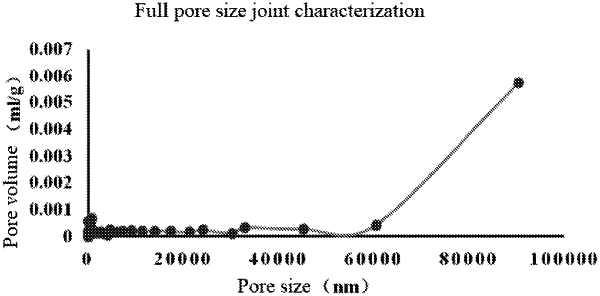| CPC G01N 15/0806 (2013.01) [E21B 49/005 (2013.01); E21B 2200/20 (2020.05); E21B 2200/22 (2020.05); G01N 2015/0866 (2013.01)] | 5 Claims |

|
1. A data processing method for joint characterization of pore structures based on a least square method, comprising:
collecting test data of a target rock sample in different gas adsorption experiments; wherein the test data comprise pore sizes and pore volumes corresponding to the pore sizes respectively; and
fitting the test data in overlapping ranges of the pore sizes using the least square method, and obtaining target pore volumes corresponding to the pore sizes respectively;
wherein the fitting the test data in overlapping ranges of the pore sizes using the least square method, comprises:
calculating an average value of two the pore volumes corresponding to each of the pore sizes in the overlapping ranges, and obtaining discrete data sets (xi, yi); wherein the xi represents the pore size, and the yi represents the average value;
generating a curve according to the discrete data sets (xi, yi), and setting the curve as a fitting curve of a basic elementary function;
solving the basic elementary function by linear fitting to obtain solution results, and substituting the solution results into the basic elementary function to obtain a target basic elementary function; and
substituting the xi of the discrete data sets into the target basic elementary function to obtain the target pore volume corresponding to each the xi.
|